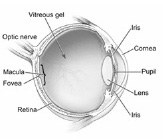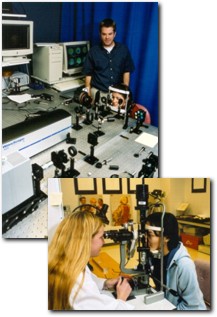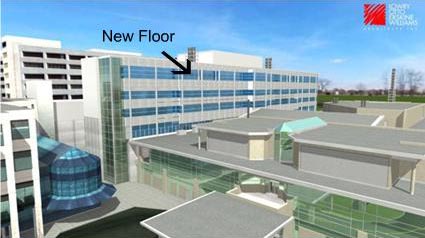toh
New Floor at the Eye Institute
Our new floor holds vast promise to further our understanding of age-related blindness and will improve our likelihood of finding a cure.
With the Baby Boomers generation fast approaching retirement age, there is a strong push to further our understanding of age-related blindness and even more so, to find a cure. The new floor in Tower 3 above the Eye Institute will provide the best in technology and resources.
Already, the University of Ottawa Eye Institute, which is affiliated with the Ottawa Hospital Research Institute, is world renowned in vision research – boasting important breakthroughs regularly. This new centre will further enhance our reputation as a leader in vision research and offer hope to the millions who currently suffer from some form of age-related blindness.
The timing couldn’t be better.
Age-related macular degeneration (AMD) is a disease that blurs the sharp, central vision you need for “straight-ahead” activities such as reading, sewing and driving. It therefore goes without saying that AMD can have a drastic effect on quality of life.
 AMD affects the macula, the part of the eye that allows you to see fine detail. In some cases, AMD advances so slowly that people notice little change in their vision. In others, the disease is so advanced it can lead to a loss of vision in both eyes. AMD is therefore a leading cause of vision loss in Canadians 60 years of age and older.
AMD affects the macula, the part of the eye that allows you to see fine detail. In some cases, AMD advances so slowly that people notice little change in their vision. In others, the disease is so advanced it can lead to a loss of vision in both eyes. AMD is therefore a leading cause of vision loss in Canadians 60 years of age and older.
The good news is that Ottawa has one of the most advanced and respected vision research programs in the world. By always blending research with clinical work, we’ve made the best in vision care available to our region long before it was available to the rest of Canada through clinical trials.
We’re proud of our accomplishments and the accolades we’ve received but we’re anxious to get onto the next phase. Our recent successes bode very well for the future of vision research.
Our first decade was concentrated on the cornea, the transparent window that covers the outside of the eyeball. Pioneering Excimer laser technology, which uses a cool beam of invisible light to precisely reshape the cornea, has brought all kinds of new treatments. For example, instead of putting a contact lens on the eye, we can actually change the cornea to imitate bifocals. Or we can remove a scar on the cornea thereby saving the patient a corneal transplant.
We’ve learned how to create an artificial cornea and are starting to use them in human eyes. This will be a terrific boon for both patient and doctors because we simply don’t have enough corneas to meet the demand. By expanding the facilities, our next decade will concentrate on diseases associated with aging.
 We’ll look at glaucoma, which attacks the optic nerve causing vision loss. We will study macular degeneration, where the person’s sight is blurred with distortions in the middle of their field of vision.
We’ll look at glaucoma, which attacks the optic nerve causing vision loss. We will study macular degeneration, where the person’s sight is blurred with distortions in the middle of their field of vision.
There are no cures for now, but exciting new therapies will have a big impact on our aging population.
Our success in discovering the gene responsible for Wagner’s disease, an inherited retinal condition, which leads to blindness, gives us great confidence that further genetic research will bring startling results.
New treatments will dramatically improve life for the many healthy seniors who are struck with limited or no eyesight.
Centre for Research on Age-Related Blindness
The new floor – the Centre for Research on Age-Related Blindness – opened in March of 2007 with 13,000 of the 29,000 square feet completed. Construction is ongoing and by early November, one half of the floor – the clinical research section – will be completed.
Our clinician researchers will have the space and the equipment to be able to carry out clinical trials and perform new investigative procedures in a state-of-the-art facility.
We have already raised over $6 million but will need another $8 million to cover the cost of new laboratories for our scientists and the recruitment of three new investigators.
A new laser – the IntraLase – has just been installed, and we will be using it not only for Excimer laser vision correction but also for new lamellar corneal surgery and corneal transplants. Its precision and accuracy heralds a whole new approach to surgery on the front of the eye.
We are thrilled at the progress that has been made thanks to the generosity of our industry partners and the community who have supported the Eye Institute since its inception over 20 years ago. The next few years should see the completion of the floor and the expansion of our research staff and projects. It is through basic research and clinical trials and that we can bring our discoveries from bench to bedside and provide the very latest in vision care to the citizens of the Ottawa Carleton region.
Last updated on: January 4th, 2017


 To reset, hold the Ctrl key, then press 0.
To reset, hold the Ctrl key, then press 0.
